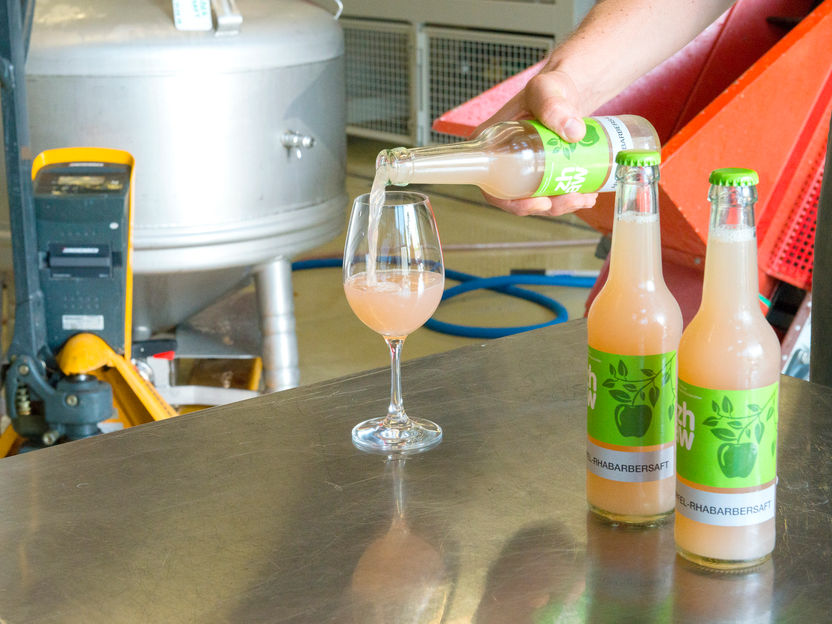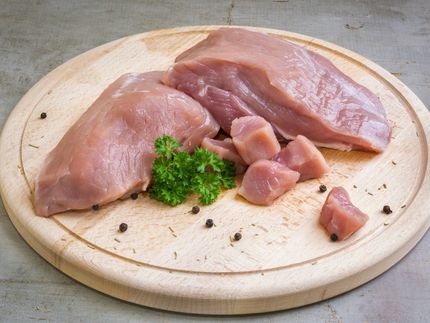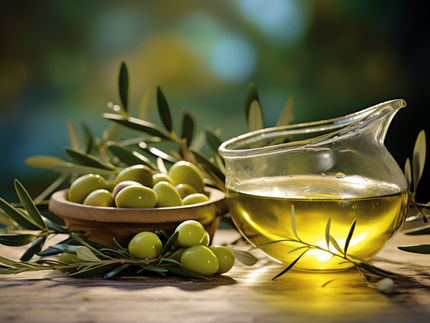Rhubarb juice as a natural antioxidant
ZHAW researchers have used rhubarb juice as a natural antioxidant in food production for the first time. As a result, rhubarb juice is not only free of ascorbic acid and sulfur, but also stays fresh for much longer. Various rhubarb varieties are now being investigated with regard to their economic efficiency.

ZHAW
For the first time, rhubarb juice was used as a natural antioxidant in the industrial processing of fruit. ZHAW researchers, together with their industrial partner Agrofruch-Inn, have made apple chips and deep-frozen apples on a natural basis more durable. While the fruits conventionally treated with ascorbic acid turned brown after only a few hours, the fruits treated with rhubarb juice remained permanently protected from oxidation. "This provides rhubarb juice is particularly interesting for convenience products, dried fruits, frozen fruits or fruit juices, but also for cut lettuce," says ZHAW researcher Martin Häfele of the Institute for Food and Beverage Innovation. The ZHAW project is supported by the Association of Swiss Vegetable Producers and the Swiss Fruit Association.
Rhubarb in keeping with the spirit of the times
The antioxidant effect of rhubarb juice was discovered as early as the mid-1990s. Rhubarb has a high oxalic acid content, which protects against oxidation. Ascorbic acid or sulphur are most frequently used to preserve foodstuffs. The rhubarb juice process, on the other hand, has never been adapted for practical use. "Today, however, rhubarb as a natural antioxidant is in keeping with the spirit of the times," Häfele is convinced. "In addition, complete added value in Switzerland makes it possible to use the 'Swissness' label in addition to the 'Clean Label', thus increasing the attractiveness of the product.
The rhubarb plant fits well into Switzerland because of its soil and climate requirements. Due to the early harvest time from April to the end of June, no pesticides are needed at all. With up to 30 tonnes per hectare of land, rhubarb perennials can be produced cost-effectively in organic quality. Since the use of ascorbic acid is prohibited for organic products, this provides a natural way of controlling enzymes. However, rhubarb juice could also be used as an antioxidant in kosher or halal products.
Cost reasons as inhibitors
There are also economic reasons why rhubarb juice has not yet overtaken ascorbic acid. Ascorbic acid is significantly cheaper to use than rhubarb juice. For example, to protect a litre of apple juice from oxidation with ascorbic acid, the cost is one centime for ascorbic acid. With rhubarb juice concentrate it costs 30 times more. For this reason, Martin Häfele and a team from the ZHAW research groups Food Process Development and Horticulture are now investigating different varieties of rhubarb with regard to
Aroma, yield and oxalic acid content. Due to their use for direct consumption, the rhubarb varieties currently cultivated in Switzerland are exclusively selected and bred for a low oxalic acid content. The evaluation of rhubarb varieties is intended to improve the economic competitiveness of the new antioxidant. A higher concentration of oxalic acid in rhubarb juice reduces the amount of concentrate required for processing and thus reduces costs.
Sugar-reduced juices
In addition to its use as an antioxidant, rhubarb - with its fresh and fruity aroma - is particularly suitable as a mixing partner for fruit juices. Due to its low sugar content of 10 to 15 grams per litre, the sugar content in the end product can be significantly reduced. The ZHAW project is therefore also investigating the aromatic differences of the cultivated varieties sensory and analytical and the process-related aroma changes are reproduced. The ZHAW researchers have already produced an apple juice enriched with rhubarb juice for testing purposes. "Our aim is to make rhubarb juice known and promote it as a biologically and ecologically sensible alternative to the common antioxidants," says Häfele.
Most read news
Topics
Organizations
Other news from the department science

Get the food & beverage industry in your inbox
By submitting this form you agree that LUMITOS AG will send you the newsletter(s) selected above by email. Your data will not be passed on to third parties. Your data will be stored and processed in accordance with our data protection regulations. LUMITOS may contact you by email for the purpose of advertising or market and opinion surveys. You can revoke your consent at any time without giving reasons to LUMITOS AG, Ernst-Augustin-Str. 2, 12489 Berlin, Germany or by e-mail at revoke@lumitos.com with effect for the future. In addition, each email contains a link to unsubscribe from the corresponding newsletter.































































